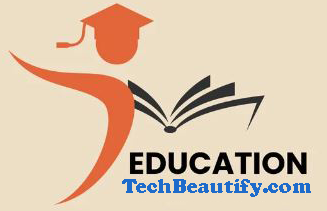The Rise of Personalized Learning: Tailoring Education to Individual Needs
Outline
- Introduction
- Definition of personalized learning
- Importance of tailoring education
- Overview of the article
- The Evolution of Education
- Traditional education model
- Limitations of one-size-fits-all approach
- Early experiments in personalized learning
- What is Personalized Learning?
- Key components of personalized learning
- Differentiation vs. personalization
- Examples of personalized learning in practice
- Technological Advancements Driving Personalized Learning
- Role of AI and machine learning
- Learning management systems (LMS)
- Educational apps and tools
- Benefits of Personalized Learning
- Improved student engagement
- Enhanced understanding and retention
- Catering to different learning styles
- Challenges and Concerns
- Data privacy issues
- Equity in access to technology
- Teacher training and adaptation
- Personalized Learning in K-12 Education
- Case studies of successful implementation
- Curriculum adaptation
- Student and parent feedback
- Personalized Learning in Higher Education
- Online courses and MOOCs
- Adaptive learning platforms
- Impact on student outcomes
- Role of Educators in Personalized Learning
- Shifting from lecturers to facilitators
- Professional development for teachers
- Collaboration with tech developers
- Student Perspective on Personalized Learning
- Personal experiences and testimonials
- Student autonomy and motivation
- Peer collaboration and support
- Future Trends in Personalized Learning
- Predictive analytics in education
- Gamification and immersive learning
- Potential for global implementation
- How to Implement Personalized Learning
- Steps for schools and institutions
- Involving stakeholders (teachers, parents, students)
- Measuring success and impact
- Case Studies of Personalized Learning
- Success stories from various educational levels
- Challenges faced and solutions found
- Long-term outcomes
- Conclusion
- Summary of key points
- The importance of continuing to innovate
- Final thoughts on the future of education
- FAQs
- What is personalized learning?
- How does technology support personalized learning?
- What are the main benefits of personalized learning?
- What challenges does personalized learning face?
- How can schools implement personalized learning?
The Rise of Personalized Learning: Tailoring Education to Individual Needs
Introduction
Education has come a long way from the rigid, one-size-fits-all model that dominated classrooms for centuries. Today, we are witnessing a significant shift towards personalized learning, a revolutionary approach that tailors education to meet the unique needs, strengths, and interests of each student. But what exactly is personalized learning, and why is it so crucial in modern education? In this article, we’ll explore the rise of personalized learning, its benefits, challenges, and the role of technology in making it a reality.
The Evolution of Education
Traditional education models have long relied on a standardized curriculum where every student is taught the same material in the same way. This approach, while effective in some respects, often fails to address the individual needs of students. Many students find themselves either struggling to keep up or bored because the material isn’t challenging enough. Early experiments in personalized learning began as educators sought ways to better engage students and cater to diverse learning styles.
What is Personalized Learning?
Personalized learning is an educational approach that aims to customize learning experiences to individual student needs. This involves adjusting the pace of learning, tailoring instructional methods, and utilizing various resources to ensure each student can achieve their full potential. Unlike differentiation, which modifies instruction for groups of students, personalized learning zeroes in on the individual.
Key Components of Personalized Learning
- Individual Learning Plans: Custom curriculum plans based on student assessments.
- Flexible Learning Environments: Varied instructional methods and settings.
- Student Agency: Empowering students to take control of their learning.
Examples of Personalized Learning in Practice
- Montessori Schools: Where students have the freedom to choose their activities.
- Online Learning Platforms: Providing tailored content and feedback.
Technological Advancements Driving Personalized Learning
The rise of personalized learning has been significantly bolstered by advancements in technology. Artificial intelligence and machine learning algorithms analyze student data to identify strengths and areas for improvement, creating a personalized learning path. Learning management systems (LMS) like Canvas and Blackboard offer robust platforms for delivering tailored content. Additionally, educational apps and tools provide interactive and engaging ways for students to learn at their own pace.
Benefits of Personalized Learning
The benefits of personalized learning are manifold. Students who engage in personalized learning often exhibit higher levels of engagement and motivation. They are more likely to understand and retain information because the instruction is tailored to their needs. Personalized learning also accommodates different learning styles, whether a student learns best through visual, auditory, or kinesthetic methods.
Challenges and Concerns
Despite its many benefits, personalized learning comes with its own set of challenges. Data privacy is a significant concern, as the collection and use of student data must be handled with care to protect students’ rights. There is also the issue of equitable access to technology, which can create disparities in the quality of personalized learning experiences. Moreover, teachers need substantial training and support to effectively implement personalized learning strategies.
Personalized Learning in K-12 Education
In K-12 education, personalized learning has shown promising results. Schools that have successfully implemented personalized learning often see improved student outcomes and satisfaction. Adapting the curriculum to meet individual needs can be challenging, but with the right tools and support, it is achievable. Feedback from students and parents is generally positive, highlighting increased engagement and better academic performance.
Personalized Learning in Higher Education
Higher education institutions are also embracing personalized learning through online courses and Massive Open Online Courses (MOOCs). Adaptive learning platforms like Coursera and edX use data to provide personalized learning experiences, helping students achieve better outcomes. This shift is transforming how higher education is delivered, making it more accessible and tailored to individual needs.
Role of Educators in Personalized Learning
Educators play a crucial role in the success of personalized learning. They must shift from being mere lecturers to facilitators of learning, guiding students on their personalized learning journeys. Professional development is essential to equip teachers with the skills and knowledge needed to implement personalized learning effectively. Collaboration with technology developers is also important to ensure the tools used are effective and user-friendly.
Student Perspective on Personalized Learning
Students generally have positive experiences with personalized learning. They appreciate the autonomy and flexibility it offers, which can significantly boost their motivation and engagement. Personal testimonials often highlight the benefits of a tailored approach, with students feeling more supported and understood. Peer collaboration and support are also enhanced, as students can work together on projects that interest them.
Future Trends in Personalized Learning
Looking ahead, several trends are likely to shape the future of personalized learning. Predictive analytics will play a significant role in anticipating student needs and tailoring instruction accordingly. Gamification and immersive learning experiences, such as virtual and augmented reality, will make learning more engaging and interactive. The potential for global implementation of personalized learning is immense, offering the promise of tailored education for all students, regardless of location.
How to Implement Personalized Learning
Implementing personalized learning requires careful planning and collaboration. Schools and institutions should start by assessing their current capabilities and identifying areas for improvement. Involving all stakeholders, including teachers, parents, and students, is crucial for buy-in and success. Measuring the impact of personalized learning initiatives is also important to ensure they are effective and to make necessary adjustments.
Case Studies of Personalized Learning
There are numerous success stories of personalized learning across different educational levels. These case studies often highlight the challenges faced during implementation and the solutions found. Long-term outcomes generally show improved academic performance, higher student satisfaction, and better preparedness for future challenges.
Conclusion
Personalized learning represents a significant shift in education, offering a more tailored and effective approach to teaching and learning. While there are challenges to overcome, the benefits far outweigh the drawbacks. As technology continues to advance, the potential for personalized learning to transform education on a global scale is enormous. By continuing to innovate and adapt, we can ensure that every student has the opportunity to reach their full potential.
FAQs
What is personalized learning?
Personalized learning is an educational approach that tailors instruction to meet the unique needs, strengths, and interests of each student, allowing for customized learning experiences.
How does technology support personalized learning?
Technology supports personalized learning by using AI and machine learning to analyze student data, creating individualized learning paths and offering tailored content through learning management systems and educational apps.
What are the main benefits of personalized learning?
The main benefits include improved student engagement, enhanced understanding and retention, and accommodation of different learning styles, leading to better academic outcomes.
What challenges does personalized learning face?
Challenges include data privacy concerns, equitable access to technology, and the need for substantial teacher training and support to implement personalized learning effectively.
How can schools implement personalized learning?
Schools can implement personalized learning by assessing current capabilities, involving all stakeholders, using appropriate technology, and continuously measuring and adjusting the impact of personalized learning initiatives.

